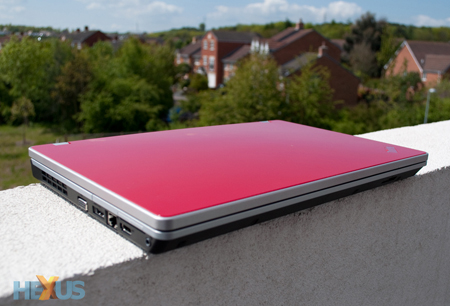Arrandale faces up to Danube
Choosing a notebook has always been a tricky decision, and with new options arriving on an almost daily basis, the decision-making process isn't getting any easier.
And it isn't just the notebooks themselves that are being constantly refreshed; their innards too have in recent months evolved to provide a new set of configuration options.
At the turn of the year, Intel raised the bar for mobile performance with the unveiling of its Core 2010 processor family. That may have had you convinced, but five months later AMD fired back with a completely-revamped Vision comprised of its Nile and Danube platforms.
So which core technology is right for you? In order to find out, we're pitting the Lenovo ThinkPad Edge 15 against... itself? Well, sort of. We're using two unique models of the notebook, one configured with Intel technology, the other with AMD.

We've previously reviewed the notebook in question - and you can read all about it by clicking here - but for today's article, we're interested in answered one particular aspect; is it better with Intel or AMD innards?
In order to find out, we've picked two closely-matched configurations that fetch close to £700 apiece at retail.
In Intel's corner, the ThinkPad Edge 15 comes armed with a dual-core Core i5 430M processor, 4GB of DDR3 memory, a 320GB hard disk and integrated Intel HD graphics.
The challenging AMD configuration serves up a triple-core Phenom II P820 processor, the same 4GB of DDR3 memory, a 320GB hard disk and integrated AMD Mobility Radeon HD 4250 graphics.
That's about as closely matched as it gets, but before we get to the benchmarks, here's a look at the complete system configurations in full:
| Comparison systems | ||
|---|---|---|
| Laptop | Lenovo ThinkPad Edge 15 (AMD) | Lenovo ThinkPad Edge 15 (Intel) |
| Processor | AMD Phenom II P820 (1.8GHz, 1.5MB L2 cache, triple-core, 25W) | Intel Core i5 430M (2.26GHz, 3MB L3 cache, dual-core, 35W) |
| Chipset | AMD M880G | Intel HM55 Express |
| Memory | 4GB DDR3 | 4GB DDR3 |
| Graphics | AMD Mobility Radeon HD 4250 | Intel HD Graphics |
| Graphics driver | AMD Catalyst 10.7 | Intel 8.15.10.2057 |
| Display | 15.6in - 1,366x768 | 15.6in - 1,366x768 |
| Battery | 6 cell, 48Whr | 6 cell, 48Whr |
| Weight | 2,560g (including battery) | 2,476g (including battery) |
| Wireless | Realtek WLAN (802.11bgn) and Bluetooth 2.1 | Intel WiFi Link 1000 (802.11bgn) and Bluetooth 2.1 |
| Disk drive | Seagate Momentus 320GB HDD, 7,200RPM, 16MB cache | Seagate Momentus 320GB HDD, 5,400RPM, 8MB cache |
| Optical drive | DVD-RW | DVD-RW |
| Operating System | Microsoft Windows 7 Professional, 64-bit | Microsoft Windows 7 Professional, 64-bit |
| Price | £680 | £705 |
| Benchmarks | ||
| Geekbench 2.1.6 | A cross-platform benchmark used to measure memory and processor performance. Run using high-performance mode. | |
| Cinebench 11.5 | Using Cinebench's multi-CPU render, this cross-platform benchmark stresses as many cores as possible. Run using high-performance mode. | |
| 3DMark06 | A PC benchmark used to test the DirectX 9 performance of a system's graphics card. Run using high-performance mode. | |
| Battery test | In order to measure battery life, we run the notebook on balanced power settings and loop a 720p movie trailer, measuring the time taken to hibernate. | |
| Power consumption | Using balanced power settings, we record mains power draw whilst playing back a 720p movie trailer. | |
Any guesses on who'll come out on top? Think a triple-core chip has the beating of a dual-core? Think AMD Radeon graphics will win out over Intel's HD? Assuming that the lower-power Phenom II chip will offer better battery life?
If so, you'd be wrong on all accounts.









